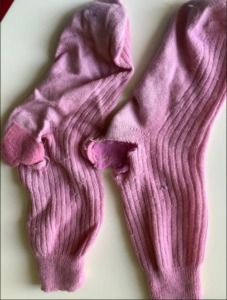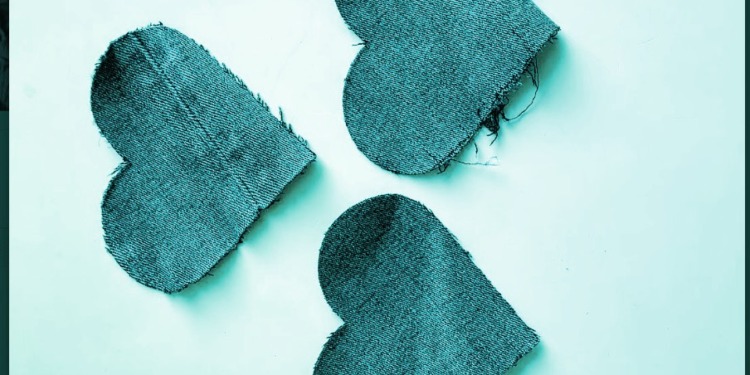Editor’s Note: This is the fifth article in the series “Our Sustainable Future”. The first article is here (how to be a conscious consumer), the second is here (how to tackle bathroom plastic waste), the third is here (how to tackle kitchen plastic waste) and the fourth is here (minimalistic life choices). The author is a filmmaker who lives in the U.K. and she records for us how she became a “conscious consumer”, with a new lifestyle on a path to building a sustainable future for herself and her family. Here she tells us why consumers should have the right to repair in keeping with the circular business model.
The right to repair should be a universal consumer right across the world. The repair process is cheaper than buying a new item, while keeping with the new circular business model that encourages circular production instead of tossing the broken items away.
Of course, the products must be made to last longer; unfortunately, currently, they are not. Planned obsolescence is an ideal business model for faceless corporations, making a ton of money by making their products short-lived. If consumers want to use their products, they will have to keep replacing the broken items instead of replacing parts, as it used to be when I was growing up in 1980s Poland.
Since 2019 the movement toward consumers’ right to repair has been gaining momentum.
However, the progress is still slow. In most environmental cases, “the people” are against “the lobbing and the money”. Nevertheless, ultimately the power is always with the people, something the corporations and governments seem to be forgetting, again.
If you don’t believe me, check the history books. Luckily, some organisations have been making much-needed progress. Read more about their work in the EU here, the UK here, and the US here.
The story of two blenders
In the past couple of months, two of my blenders broke down, which means that I’m actively looking for a replacement. One of the blenders must have been 8 years old and used almost daily. The other one was used sporadically and just turned 2, so it was just about too late to return it, but perfectly in keeping with the obsolescence targets.
I got agitated when the latter broke down because, unwillingly, in being forced to replace it, I found myself supporting a company that champions waste and doesn’t see pollution as a major issue in the current environmental crisis. My hubby took both blenders to our local recycling centre, but what will happen to them now is unknown to me.
My eco-minimalistic mindset and minimalistic lifestyle choices are in sharp contrast with business strategies that turn the simple act of buying into overbuying. I rebel with all my senses against planned obsolescence, which has dominated people’s lives for way too long.
The only winners in planned obsolescence are the corporations and the people who run them. As consumers, we keep spending money on products that shouldn’t be replaced every season like clothing or shoes, or every few years like appliances and electronics.
This system takes money out of our pockets. It puts them in the pockets of corporate powers that not only avoid paying their fair share of taxes but also, at the same time, avoid responsibility for their polluting activities and continue to not make much-needed changes to their production and distribution setups.
Since I’m in the market for a new blender, I’m taking my time to carefully research the market before buying the right one, for which I’ll have the right to fix. I’m also going to ask family and friends if they have a blender they don’t use and would like to sell. The best product to buy is always the one that is already on the market.
The tale of a pair of socks, a favorite cardigan, and jeans
Still, apart from large-size items, which we all buy now and then, we also have smaller items around our houses that are broken and seem unusable.
 Only a couple of Christmases ago, I got from Father Christmas a pair of fancy socks from John Lewis, which in the UK used to represent quality.
Only a couple of Christmases ago, I got from Father Christmas a pair of fancy socks from John Lewis, which in the UK used to represent quality.
Sadly, only a few weeks after I started wearing them, I acquired, through no fault of my own, large holes on both soles.
Because of Covid, delays in communication and every other excuse used during the pandemic, I couldn’t return the socks, so I ended up with a pair of socks that weren’t usable and were destined for a landfill.
I could have thrown them away, but that would have made me feel even more helpless and powerless. Instead, I decided to fix them.
As of this writing, I’ve already fixed the socks twice, and both times I was able to use them for the time being before another hole appeared.
I still have them, and once again, they need repairing. I plan to get the job done again before the cold season kicks in.
It would have been easier just to chug them in the bin; however, if I had done that, I would have been playing right into the hands of corporate greed.
And I’m not doing it anymore.
 On the positive side, I successfully fixed one of my old-time favourite cardigans last year.
On the positive side, I successfully fixed one of my old-time favourite cardigans last year.
I’ve had it for a long time and have used it a lot, so the holes on my elbows weren’t that surprising.
Now that it’s fixed, I hope to use it for another 10+ years.
On my fixing list, I also have a couple of pairs of jeans that need some love. However, I’m not sure whether that is entirely possible.
Still, I’m not going just to toss the jeans away. Last year I used one pair of unfixable jeans to cut heart shapes out of it, which I used for fixing my cardigan.
I might end up cutting lots of hearts out of these ones, too.
Are the big corporations and governments doing anything to help?
New information about what businesses and governments are doing is in fact surfacing every day, the circular economy is the talk of the day. Unquestionably, we’re not there yet, it’s a fast-evolving situation with contentious news about greenwashing but also some bright spots.
What is happening in the fashion industry is in fact happening in the technology sector too and it goes by the fancy name of the “Offtake model” – a system to reclaim and recycle valuable materials as companies realise that in order to meet the 2030 UN Agenda of Sustainable Development Goals, they are forced to source sustainable materials that are growing increasingly scarce.
Governments are trying to fulfill their role and trace a recycling path towards sustainability with variable success; among them, the European Union has made the most progress, with the adoption in March 2020 of the new Circular Economy Action Plan as a follow-up to the European Union’s Green Deal. It targets how products are designed, promotes circular economy processes, encourages sustainable consumption, and aims to ensure that waste is prevented.
The plan is expected to expand from year to year, making recycling obligatory for ordinary fashion – and especially fast fashion companies that are particularly wasteful and often unethical in their use of labour. And what is done for fashion is done for tech products too.
Still, the best option as of 2022 is to find a second life for your clothing, or any other item for that matter.
My plans for the near future
If you have read any of my previous articles, you know that I’m a kind of ‘do it as much as you can’ kind of gal. That attitude and possibly my need to create something in the process got me wondering, how I could creatively re-use the items that seem beyond repair. It will take a little bit of time and imagination, and possibly learning. I’m learning how to use the sewing machine this summer and I’m mega super excited about that prospect.
Re-using my old clothes, re-designing them, and finding an alternative, second life for them is in keeping with my current lifestyle choices.
Keeping as many things away from landfills as possible is my new mantra, which perfectly wraps around my interests in financial independence, long-term sustainability, tiny houses and urban gardening.
YouTube has a gazillion “How To…” videos on every subject. Learning how to repurpose items that otherwise would be polluting the planet has never been easier. I understand that people are busy, have jobs, and it’s easier to buy a gift than to make it yourself. But if we take a closer look, the need to work a certain number of hours to pay for that gift/s is usually substantial.
What if, instead of working the extra hours to pay for the gift, you make something personal and one of a kind for people you care about. If you already have materials and resources from your old items, I don’t only mean clothing, search the Internet, see what’s out there, and get creative, it’s so much more satisfying.
Some tips for a more sustainable lifestyle
Before you throw anything out, check first if the product has the right to be repaired; if it does, use your right and get the producers to pay for the repairs if you can or buy the parts you can replace yourself.
If the items are smaller and more personal, see if you can find a second life for them and salvage bits and pieces to turn them into a creative endeavour.
If you don’t know how to repair clothing yourself, find a repair or tailor shop. I have noticed that in the past year, more and more locally run co-ops have started popping up, offering repairs and lessons in fixing things.
Fight corporate greed by replacing as little as possible.
Unfortunately, planned obsolescence will still be with us for a while. But the less we need and the more self-sufficient our households become, planned obsolescence might soon become obsolete.
Editor’s Note: The opinions expressed here by Impakter.com columnists are their own, not those of Impakter.com – In the Featured Photo: Magda’s cutout hearts for mending Source: All the photos are the author’s










